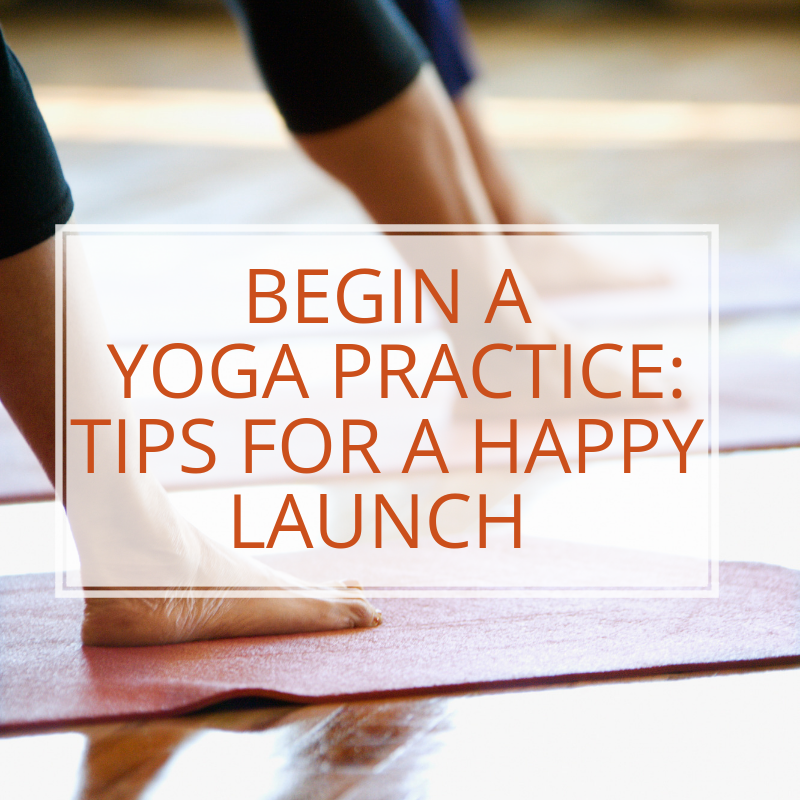Thinking of adding yoga practice to your lifestyle? Lucky you! The first exposure of yoga is a profound experience (but for those who have a poor first match, a decidedly not-so-profound).
Here are some tips for what you can do to increase your odds of having an enjoyable and beneficial first experience as you begin a yoga practice.
1. Know yourself.
Your age, fitness level, and relative interest in physical or spiritual development will all influence your best class choice. If you are 50 and not in great shape, a level 2 Ashtanga class may be stressful and painful enough to turn you away from yoga forever. A gentle Kripalu class, however, may start you on the path to actually enjoying the Ashtanga class once you have some experience under your belt.
2. Start slow.
Choose a class that seems easy and doable first, and then progress to more strenuous styles or more advanced classes after you have learned a few basics. Learning the basics of how the body works in yoga, and how to do postures safely as you move deeper, is essential to being able to sustain a long-term practice. Please don’t skip that step! Many studios offer a series of basic classes.
3. Learn a little yoga lingo.
If you are young and fit, more active styles of yoga may be a great introduction to the practice. These include Ashtanga, Bikram, Vinyasa, and Power styles. If you are older or less physically active, begin with Kripalu, gentle Hatha (usually a blend of styles ), Viniyoga, or another gentler style. Yin yoga and Slow-flow yoga tend to be deep and meditative with longer holdings. If you enjoy an intellectual approach, you may enjoy the Iyengar style with its precise alignment and detail. Kundalini yoga features chanting and song, lots of fiery breathing, and postures which can be scaled up or down to match your physical ability. Ananda, Shivananda, and Integral yoga tend to feature spiritual development more than postures. You will, however, likely hear some yoga philosophy in any style of yoga, depending on the background and preferences of your teacher.
4. Chat with your teacher.
Here is a list of questions, excerpted from my book Every Bite Is Divine, (p 140), that will help you get to know your teacher better:
- What type of yoga do you teach?
- Do you work with individuals with medical issues or special needs?
- How long have you been studying yoga?
- How long have you been teaching?
- Do you have students like me (e.g., unfit, overweight, disabled, or with other issues) in your classes?
- Do you do individual instruction?
- How much does that cost and what would I get out of that?
5. If the first match doesn’t work, try try again.
Don’t be discouraged if you do not enjoy your first class. Try several before giving up your quest.
Here is an excerpt from Every Bite Is Divine (p 58) on beginning a yoga practice:
Before launching a new health regimen, talk it over with your physician. If you have an existing medical condition, work with your health team to adapt this work to honor your medical needs.
Professional yoga instruction is recommended for beginners. Wear loose, comfortable clothing that does not inhibit movement for practice. Find a quiet space large enough to stand with wide legs and to move your arms in all directions. A towel or yoga mat and a cushion or blanket can help make you more comfortable.
Principles for safe yoga practice include moving slowly and with awareness, maintaining smooth, easy breathing through the nose unless otherwise instructed, and not straining to achieve a position. Your yoga practice is a time to pay attention to your physical abilities and limitations and to make compassionate adjustments accordingly.
Please note that there are several types of yoga postures not recommended for an overweight body just beginning to practice. For example, inversions (going upside-down) facilitate the cleansing processes of the body, which is of particular benefit to those with hypo-digestion (slow digestion in relation to appetite) and the resulting buildup of body mass, toxins, and so forth. But the primary inversions of yoga—headstand and shoulder stand—can be injury-inducing for beginners with excess body weight and low muscle strength. So, if you are overweight, especially if you are not regularly physically active, you may need to adjust postures in order for them to be safe and beneficial. But, no matter who you are, each asana (posture) may be done safely with skillful adjustments. Working with a skilled instructor will help you learn how to make inversions and every other yoga posture safe and beneficial. Enjoy! It requires awareness and an attitude of taking your time to cultivate a beneficial practice.
If you are not regularly physically active, begin slowly so that you prevent injuries related to overdoing it. One yoga principle says that practicing for 10 minutes every day is preferable to practicing for 3 hours once a week. It’s showing up for regular daily practice that holds the magic.
A yoga practice usually contains a period of centering or settling down and turning your awareness inward, warming up or preparing the body for practice, a period of asana (physical postures) with pranayama (awareness to breath and energy movement), and relaxation/integration. There is, however, no “recipe” for a practice, and the elements listed often blend together. A period of meditation often follows a yoga practice.
May you have a life-long yoga practice that leads to happiness, health and your own true self.
Namaste.



